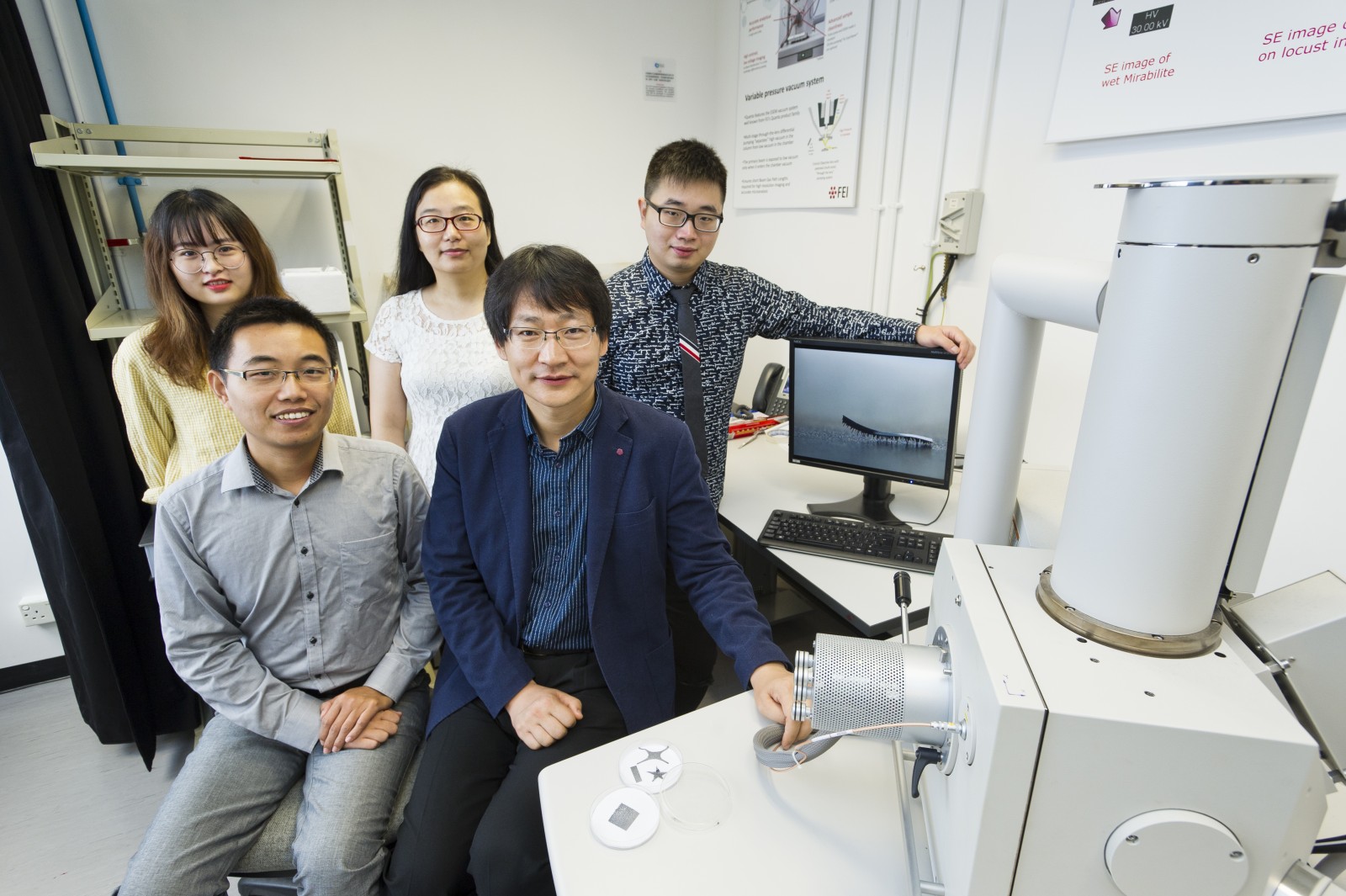
A novel tiny, soft robot with caterpillar-like legs capable of carrying heavy loads and adaptable to adverse environments has been developed by a research team led by City University of Hong Kong (CityU). The mini delivery-robot could pave the way for medical technology advances, such as drug delivery in the human body.
The highly agile milli-robot is able to leap over 10 times its leg length. Thanks to its multi-leg design, which helps reduce friction significantly, the robot can move efficiently inside surfaces in the body lined with, or entirely immersed in, body fluids, such as blood or mucus.
The research findings have been published in the latest issue of the scientific journal Nature Communications in a paper titled “A Bio-inspired Multilegged Soft Millirobot that Functions in Both Dry and Wet Conditions”.
Dr Shen Yajing, Assistant Professor in CityU’s Department of Biomedical Engineering (BME), who leads the research, said the robot has hundreds of less than 1 mm-long pointed legs, which look like tiny hairs. This greatly reduces the contact area and hence friction with the surface. Laboratory tests show that the multi-legged robot has 40 times less friction than a limbless robot in both wet and dry environments.
The materials are another key feature. The robot is fabricated with a silicon material called polydimethylsiloxane (PDMS), which is embedded with magnetic particles that enable it to be remotely controlled by applying electromagnetic force.
“Both the materials and the mutli-leg design greatly improve the robot’s hydrophobic property. And the rubbery piece is soft and can be cut easily to form robots of various shapes and sizes for different applications,” said Professor Wang Zuankai, from CityU’s Department of Mechanical Engineering (MNE), who conceived of this research idea and initiated the collaboration among the researchers.
Controlled by a magnetic manipulator in the experiments, the robot can flap or swing sideways to move forward.
“The rugged surface and changing texture of different tissues in the human body make transportation challenging. Our multi-legged robot shows an impressive performance in various terrains and thus has great potential for drug delivery in the body,” said Professor Wang.
Even when facing an obstacle 10 times higher than its leg length, the robot can easily jump over it with its deformable soft legs.
The robot also has a remarkable loading ability. Laboratory tests show that it can carry a load 100 times its own weight, which is comparable to a human easily lifting a 26-seat minibus.
“The amazingly strong carrying capability, efficient locomotion and excellent obstacle-crossing ability make the milli-robot extremely suitable for applications in a harsh environment, such as delivering a drug to a designated spot through the digestive system, or carrying out a medical inspection,” added Dr Shen.
Before conducting further tests on animals and eventually in humans, the research teams will further develop and refine its research in three areas: finding a biodegradable material, studying new shapes, and adding extra features.
“Our aim in the next two to three years is to create a biodegradable robot that will decompose naturally after completing its drug delivery mission,” said Dr Shen.
The co-first authors of the paper are Lu Haojian, PhD student from CityU’s BME, and Dr Zhang Mei from CityU’s MNE. The other co-authors include Yang Yuanyuan, PhD student from BME, and Professor Huang Qiang and Professor Toshio Fukuda from the Beijing Institute of Technology.






